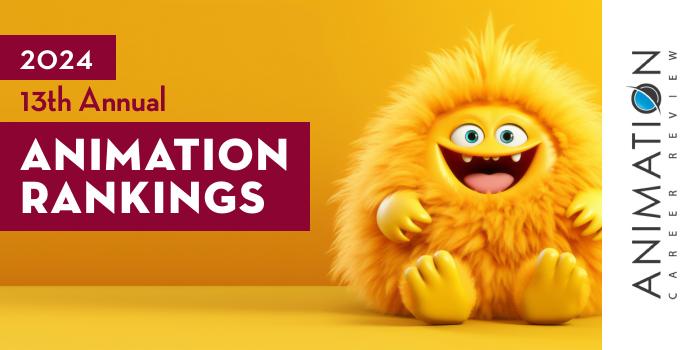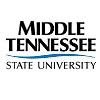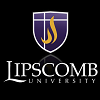
Master 3D modeling for film and video games in under 2 years with CG Spectrum. Get personalized career training online from leading 3D artists from major studios, plus career support and access to a vibrant community. Learn more.

| Ranking | School | City |
|---|---|---|
| 1 | Middle Tennessee State University | Murfreesboro |
| 2 | Lipscomb University | Nashville |
| 3 | East Tennessee State University | Johnson City |
Our 2024 ranking -our thirteenth annual- of the top animation school programs in Tennessee. For an explanation of the ranking criteria, click here.

Middle Tennessee State University (MTSU) houses an Animation BS and an 18 credit hour Animation minor. Both options are accredited by the National Association of Schools of Art and Design (NASAD). Part of the College of Media and Entertainment-Department of Media Arts, the program is designed for artists seeking careers in 2D or 3D animation, special visual effects, and motion graphics.
Beginning in the first semester, students will explore traditional animation techniques through hands-on project opportunities. Throughout this 120 credit program students will gradually advance into coursework that covers advanced digital tools and techniques. The major, which consists of 76 credit hours in animation, requires courses such as Image and Video Foundations; 2D Animation I-II; Texturing, Lighting and Rendering; Motion Graphics I-II; Animation Mechanics; Character Modeling and Rigging; Bodies in Motion; Visual Effects; Animation and Performance; and Professional Practices in Animation.
In addition to immersive animation coursework, MTSU provides the opportunity to complete an internship in the recently launched MT IMAGINE Animation Studio. Housed in the College of Media and Entertainment, the Studio produces high-end animated visuals for clients who do not have the financial means to hire a commercial studio. The Studio’s project-based, paid internships allow students, faculty, and recent graduates to create content for real clients. Projects include 2D and 3D Animation, Virtual Reality, and XR Virtual Production.
MTSU Animation BS students also have opportunities to volunteer at the annual SIGGRAPH conference. In 2023, 19 MTSU Animation students were accepted as volunteers and one was accepted as a team leader. These lucky individuals were among the nearly 300 students selected from over 100 universities worldwide for this coveted program.
To graduate from the MTSU Animation BS program, students will take a six-semester sequence of courses covering 3D animation. The final two semesters of the sequence culminate in a two-semester capstone experience consisting of an original animated short film that will be submitted to film and animation festivals locally, nationally, and around the world. This project will be centerpiece of the student’s final portfolio.
Middle Tennessee State University was established in 1909 as Middle Tennessee State Normal School. The school opened with 125 students on September 11, 1911. Today, MTSU serves more than 20,000 students enrolled in 300+ programs across eight undergraduate colleges and the College of Graduate Studies. Middle Tennessee State University is accredited by the Southern Association of Colleges and Schools Commission on Colleges (SACSCOC).

Lipscomb University was the first university in the nation to purchase the Positron Voyager—the first chair designed specifically for fully immersive cinematic virtual reality. Lipscomb also houses one of the few Animation programs to provide BA, BFA, and MFA degrees. Housed in the George Shinn College of Entertainment and the Arts, all options are led by Disney Animators, experts in Maya, and other accomplished professionals in the field. An 18 credit hour Animation minor is also available.
Across programs, students have opportunities to travel to places such as Los Angeles and Italy to attend animation events. Students also have opportunities to complete an internship at a major studio, and each semester, George Shinn College welcomes industry experts to speaking events designed to help students get an idea of what it’s like to work at some of the world’s top animation studios.
While the Animation BA and BFA have overlapping coursework, the BA requires 54 credit hours in the major, and the BFA requires 64. Course examples across programs include Dynamic Gestures; Animation Tools; CG Modeling and Lighting; Computer Animation I; Perspective, Color & Composition; Storyboarding for Animation; Writing for Animation; History of Animation; and Animation Production.
Students may enhance the degree through the required 15 credit hours of electives. Unreal Technology; Character Modeling in Zbrush; Digital Imaging (After Effects, Color, etc.); Computer Animation II-IV; and Film Production Workshop are just a few elective examples. Students in both programs will take the Portfolio Development course ad BFA students will complete an Animation Capstone across two courses.
The graduate Animation program leads to an MFA in Film and Creative Media with a focus in Animation. Students in this program will take courses, complete projects, and receive one-on-one mentorship from a faculty of five former Disney animators and other prominent animators from across the U.S. Animation MFA students will also attend classes with Film students, which provides the opportunity to collaborate and gain experience in different areas of film production.
Consisting of 62 credit hours, the Animation focus consists of courses such as the Character Design Master Class with former Disney Supervising Animator, Tom Bancroft, or John Pomeroy; Character Rigging with Maya, Toon Boom Harmony, or other software based on the students desire to pursue CG animation or 2D “Tradigital” animation pipelines; and Writing for Animation with award-winning co-creator of “Veggietales” Mike Nawrocki.
Other courses include Advanced Film Business; Media Entrepreneurship; 2D/CG Animation Pipeline; Concepts in Creative Media; Advanced Storytelling; and Zbrush Techniques. During the course of the program, students will also complete Film Production I-II. The resulting projects are submitted for the 5 Minute Film Festival—Lipscomb’s signature event for cinematic arts in the spring. Winners will have the opportunity to enter their projects in the Nashville Film Festival—an Academy Award-qualifying film festival.
All MFA students will work on a number of paid projects through CEA Studios. Launched in 2019, CEA Studios is a creative production house situated on the Lipscomb University campus. CEA Studios is also the setting for Spring Year 2 MFA Studio Internships, which provide each student with a stipend of $3,100.
The culminating experience for the Lipscomb University Film and Creative Media program is the MFA Thesis. This final project consists of a short film or animated series to be screened at the end of the final semester.
Graduates of the Animation programs at Lipscomb University are prepared to pursue a variety roles across entertainment industries. Potential career paths include (but are not limited to) 2D Animator, 3D Animator, Storyboard Artist, Director, Computer Animator, Lead Animator, Producer, and Game Animator.
Lipscomb University was founded in 1891 by ministers David Lipscomb and James A. Harding as Nashville Bible School. The school serves approximately 4,675 students enrolled in more than 240 programs across 10 colleges. Lipscomb University is accredited by the Southern Association of Colleges and Schools Commission on Colleges (SACSCOC).

The College of Business and Technology at East Tennessee State University (ETSU) houses the ETSU Scott M. Niswonger Digital Media Center. Within the Center is the Digital Media (DIGM) Department, which has several paths to study animation. Options include the Digital Media BS, MFA, and minor. As part of ETSU, all programs are accredited by the National Association of Schools of Art and Design (NASAD).
The DIGM BS has a Digital Animation concentration with 2D and 3D Pathways. This concentration also consists of 20 credit hours of guided electives. Course examples include Animation Fundamentals; Character Animation; Technical Direction; 2D Animation; Storyboarding; 2D Character Construction; 3D Animation; Procedural Modeling and Effects Simulation; and 3D Lighting & Rendering.
Throughout the ETSU DIGM BS program, students will complete several projects. The final course—Portfolio Development for Digital Media—leads to a professional portfolio of the student’s best work. Graduates are prepared for careers in areas such as 2D animation, 3D animation, technical direction, motion graphics, and character animation. Graduates are also prepared to pursue an advanced degree at ETSU or other major university.
The Digital Media MFA at East Tennessee State University is a terminal degree designed for artists who have already earned a bachelor’s degree. This program is best suited for Animators, Visual Effects Artists, Cinematographers, Coders, UI/UX Designers, 3D Designers, Creature Artists, Character Animators, and other related professionals.
Students in this non-thesis degree program may complete 12 credit hours of study in any area. An additional 12 credit hours are dedicated to team projects for both internal and external clients, and another six credits are dedicated to experimental media.
The culminating experience for the ETSU DIGM MFA allows students to develop and finalize a body of work for peer and faculty review. Graduates of the DIGM Programs at East Tennessee State University have worked on productions and games such as Kung Fu Panda, World of Warcraft, The Last Jedi, The Walking Dead, Thor: Ragnarok, Halo, and Charlie Brown.
Program alumni are Animators, Technical Directors, Modelers, Advertising Designers, Level Designers, Game Artists, VFX Artists, 3D Artists, and Compositors. They work at studios big and small such as Ubisoft Red Storm, Luma Pictures, Idol Minds, and Volition.
The 24 credit hour DIGM Minor consists of four required courses (four credits each) and eight credits of approved electives. Required courses include Digital Animation, Visual Effects and Motion Graphics, Digital Game Design, and Visualization. Electives allow students to create an emphasis in a specific area of specialization in Digital Media.
Graduates of this program are prepared to pursue entry-level roles in all areas of digital animation, game design, VFX, visualization, and motion graphics.
East Tennessee State University was established in 1911 as East Tennessee State Normal School. The school serves approximately 13,820 students enrolled in more than 140 academic programs leading to degrees at all levels. ETSU programs are housed across eleven colleges and schools, and two campuses. East Tennessee State University is accredited by the Southern Association of Colleges and Schools Commission on Colleges (SACSCOC).